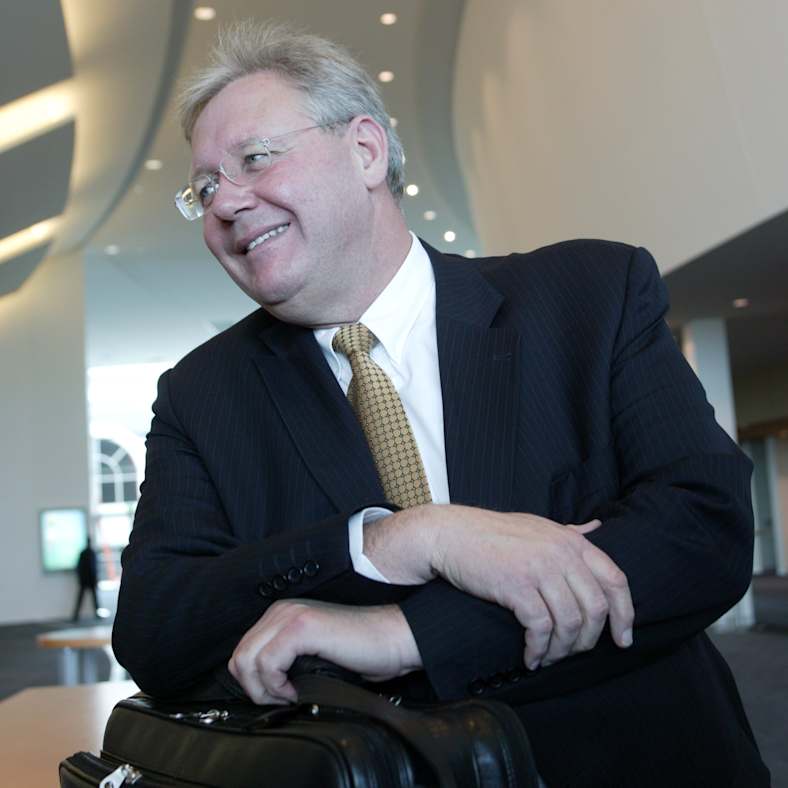WA Inc saga finally draws to a close with $1.9 billion payout over Bond's defunct Bell Group
by Aja StylesIn numbers
$667.2m
Insurance Commission of WA
$619.6m
Bell Group NV - European bonds
$410m
ATO
$110m
WA Glendinning
$110m
Bell Group UK
It has taken 30 years, but the $1.9 billion payday over the collapse of Alan Bond’s Bell Group during Western Australia’s notorious WA Inc era has finally arrived for creditors.
The once billion-dollar media and resources empire built by Robert Holmes à Court has been wound up after the most expensive and longest-running set of civil litigation in the state’s history.

On Friday, the liquidator for Bell Group and its finance arm distributed funds to its five major creditors, including a hard-fought windfall of $670 million to the WA government.
Almost half that sum has already been spent on proceedings dating back to 1995, at a court-estimated cost of $328 million, of which the government’s Insurance Commission of WA has carried the burden.
Treasurer Ben Wyatt said he was pleased to have helped play a role in bringing to an end the long-running saga.
And it’s a saga the government will happily sweep into history, given it was born out of some of Labor's darkest days.

The WA Inc era marked the 1980s political scandal centred around then-Labor premier Brian Burke’s questionable dealings with Perth’s biggest businessmen, whose corporate collapses came at the expense of taxpayers.
Among them was the 1988 partnership of the state government’s insurance commission (now referred to as ICWA) with Bond Corporation in acquiring major interests in Mr Holmes à Court’s flailing Bell Group, following the 1987 stock market crash.
The state spent $160 million on shares and $140 million on domestic bonds in a bailout deal that allowed Mr Holmes à Court to walk away with $350 million, while Mr Bond took over the company's stewardship.
Mr Bond used the opportunity to siphon $1.2 billion out of Bell Resources to prop up his own debts, a corporate crime that saw him spend four years in jail.
Bell Group’s fate was sealed and the commission came out of the deal two years later, $155 million poorer and holding worthless junk bonds.
But during its 90s collapse, a group of Australian banks led by Westpac, and a syndicate of overseas banks headed by Lloyds Bank, managed to seize the Bell Group’s main assets through a dodgy restructure of outstanding unsecured loans, which they sold for $262.5 million.
More than a decade later, the Supreme Court found the 21 banks had breached their duties in a hearing that spanned 404 sitting days, and eventually reached the High Court, before the banks agreed to settle with the group’s liquidators for $1.7 billion.
That 2014 settlement sum then grew to $1.9 billion through accrued interest while the beneficiaries fought it out in multiple courts over many more years.
They were mostly made up of distressed debt investors, including the ICWA given it bought JN Taylor Holdings’ $291 million debt in Bell Group for cents in the dollar.
The matter came to a head before the Supreme Court when, in December last year, the Bell Group’s liquidator Tony Woodings negotiated a landmark distribution structure that managed to satisfy the five major creditors.
Topping the list was ICWA on $667.2 million, followed by the European bonds arm of Bell Group (BGNV), which secured $619.6 million for its Dutch debt investor Louis Reijtenbagh and his Plaza Group.

The Australian Taxation Office secured $410 million for outstanding tax related to the liquidation; creditor WA Glendinning & Associates bagged $110 million; and the liquidators for the UK arm of Bell Group, who continue to slog it out with creditors before the European and British courts, will be entitled to $110 million.
“It is unarguable that [Mr Woodings] is operating in perhaps the most unusual and acrimonious of circumstances where litigation concerning the liquidation of the Australian Bell Group has already spanned more than 25 years,” Supreme Court Justice Jennifer Hill said in her written findings in April.
“There is a deep and entrenched history of litigation between the various parties which, but for entry into the settlement deeds, would continue unabated for the foreseeable future.”
Among those to also walk away with millions is BGNV liquidator Garry Trevor, whose role in securing his major funder, Plaza Group, a lion’s share of the settlement earned him almost $5 million in fees.
In concluding his tenure as a court-appointed liquidator, the Perth partner of Ferrier Hodgson told the Supreme Court that any money leftover once Plaza Group had taken its share would go a trust that was appointed to oversee Bell Group’s subordinate bondholders, none of which were in Australia since BGNV had no Australian creditors.